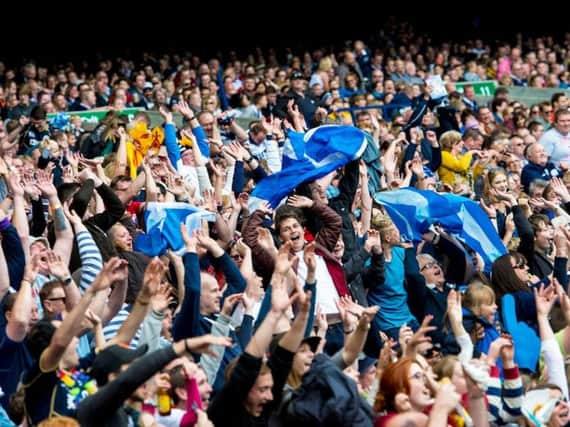COMMENT: Will Murrayfield locals give football a red card, wonders David Alexander


Some readers may be wondering why this week’s column is devoted to a subject perhaps more suited to the sports section or news pages; but please bear with me as there is a correlation between football stadiums and residential property values.
The Hampden-Murrayfield debate is not new; more than 20 years ago the rugby ground was being touted as a potential football venue before a deal on a £59 million refurbishment of Hampden was agreed.
Advertisement
Hide AdAdvertisement
Hide AdAt the time, invited by The Scotsman to provide a quote, I opined that as a football fan and resident of Edinburgh I was all for the idea… but might take a different view if I lived in the vicinity of Corstorphine Road. A few days later the local press carried a story relating the concerns of local residents at the prospect of Murrayfield being used regularly for football internationals and cup finals.
Most large and medium-sized football grounds in Scotland – indeed across Great Britain – are located in what are still referred to as “working-class areas”. However, they have been part of the scene for longer than anyone can remember and, taking Edinburgh as a relevant example, the presence of Tynecastle and Easter Road have certainly not dampened house-price growth in their respective localities.
But Murrayfield (as a venue for football) would be unusual in that it lies on the doorstep of a middle-class district with a fair measure of high-value housing. Local residents have, of course, co-existed with rugby crowds for decades but they might not be so sanguine about playing host to followers of the round ball… especially an Old Firm cup final.
At a meeting of Murrayfield Community Council in August it was stated that police had received several e-mails from residents concerned about football at Murrayfield Stadium although one member said there had been “little trouble” from fans at past fixtures.
The issue is probably more one of perception – always important in property. So while local house prices are unlikely to be adversely affected, there may be some drop in demand with potential future buyers who might have considered Murrayfield more disposed to other parts of the “villa belt” (eg Newington or Merchiston).
Should the SFA take the Murrayfield option, I suspect some residents of Mount Florida in Glasgow might not be too sad to see the demise of Hampden, which would surely be the ultimate outcome. Should the land be sold for housing, then existing local properties might be hit, in the short term, by “competition” from the new arrivals.
However, there is plenty of evidence to suggest that, over the longer-term, new-build on gap sites (if sensitively developed) actually helps raise the values of local properties.
Even today, sentiment has a part to play in football; neutral Hampden has retained a genuine affection among many supporters of all colours and Glasgow is the spiritual home of Scottish football, whereas Edinburgh is considered more of a “rugby town”.
Advertisement
Hide AdAdvertisement
Hide AdOn the other hand, the capacity advantages of Murrayfield (67,000 to 52,000) are obvious and there is clearly an element within the SFA that sees a move as having a financial benefit.
A final decision is not expected until the summer, which means a waiting game for any concerned resident of douce Murrayfield. But with Glasgow City Council, desperate to avoid the loss of wider income from football and pop concerts, proposing a third option that Hampden’s lease be extended for five years, this one could go to extra time and may well be decided on penalties.
David Alexander is MD of DJ Alexander